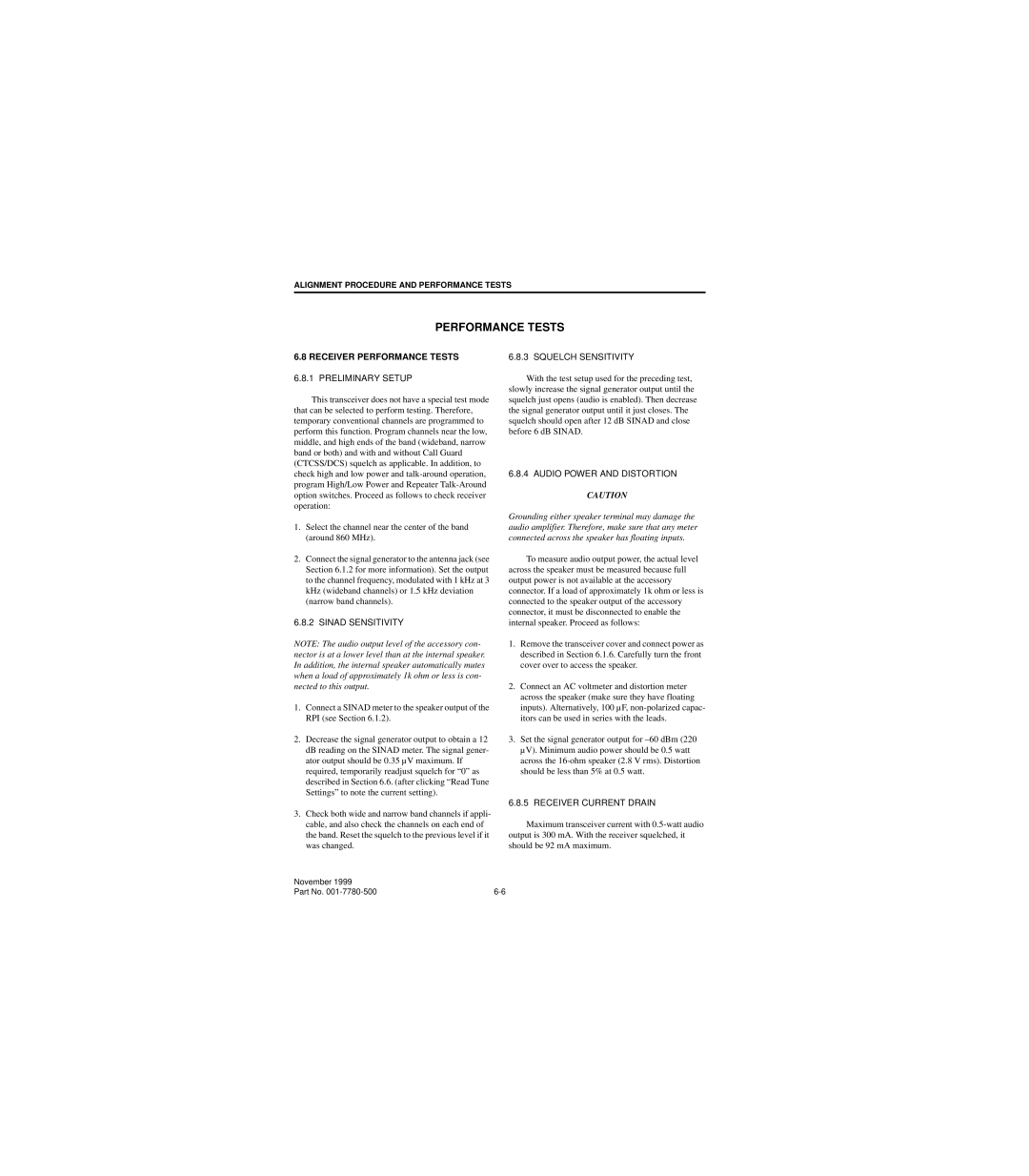ALIGNMENT PROCEDURE AND PERFORMANCE TESTS
PERFORMANCE TESTS
6.8 RECEIVER PERFORMANCE TESTS
6.8.1 PRELIMINARY SETUP
This transceiver does not have a special test mode that can be selected to perform testing. Therefore, temporary conventional channels are programmed to perform this function. Program channels near the low, middle, and high ends of the band (wideband, narrow band or both) and with and without Call Guard (CTCSS/DCS) squelch as applicable. In addition, to check high and low power and
1.Select the channel near the center of the band (around 860 MHz).
2.Connect the signal generator to the antenna jack (see Section 6.1.2 for more information). Set the output to the channel frequency, modulated with 1 kHz at 3 kHz (wideband channels) or 1.5 kHz deviation (narrow band channels).
6.8.2 SINAD SENSITIVITY
NOTE: The audio output level of the accessory con- nector is at a lower level than at the internal speaker. In addition, the internal speaker automatically mutes when a load of approximately 1k ohm or less is con- nected to this output.
1.Connect a SINAD meter to the speaker output of the RPI (see Section 6.1.2).
2.Decrease the signal generator output to obtain a 12 dB reading on the SINAD meter. The signal gener- ator output should be 0.35 µ V maximum. If required, temporarily readjust squelch for “0” as described in Section 6.6. (after clicking “Read Tune Settings” to note the current setting).
3.Check both wide and narrow band channels if appli- cable, and also check the channels on each end of the band. Reset the squelch to the previous level if it was changed.
6.8.3 SQUELCH SENSITIVITY
With the test setup used for the preceding test, slowly increase the signal generator output until the squelch just opens (audio is enabled). Then decrease the signal generator output until it just closes. The squelch should open after 12 dB SINAD and close before 6 dB SINAD.
6.8.4 AUDIO POWER AND DISTORTION
CAUTION
Grounding either speaker terminal may damage the audio amplifier. Therefore, make sure that any meter connected across the speaker has floating inputs.
To measure audio output power, the actual level across the speaker must be measured because full output power is not available at the accessory connector. If a load of approximately 1k ohm or less is connected to the speaker output of the accessory connector, it must be disconnected to enable the internal speaker. Proceed as follows:
1.Remove the transceiver cover and connect power as described in Section 6.1.6. Carefully turn the front cover over to access the speaker.
2.Connect an AC voltmeter and distortion meter across the speaker (make sure they have floating inputs). Alternatively, 100 µ F,
3.Set the signal generator output for
6.8.5 RECEIVER CURRENT DRAIN
Maximum transceiver current with
November 1999 |
|
Part No. |
